Foot-and-mouth disease: A new antiviral stops the super-spreader in its tracks
Dr Tatsuya Nishi and Dr Kazuki Morioka from the National Institute of Animal Health at the National Agriculture and Food Research Organization, Japan, have been testing a promising treatment against foot-and-mouth disease virus (FMDV). Feeding pigs an antiviral drug (T-1105) may prevent any outbreak from spreading since it inhibits pigs from producing virus particles. Pigs are currently thought to be super-spreaders of this contagious disease of livestock, so the strategic deployment of T-1105 may completely change the management of this expensive threat.
Mention foot-and-mouth disease (FMD) within any farming community and you will get a fearful response – for good reason. FMD is a viral disease of cloven-hooved animals which includes economically crucial livestock, such as cattle and pigs. Once infected, animals often develop painful blisters, mainly in the mouth and on the feet, and can be left with permanent heart damage and weakened condition.
The symptoms are unpleasant, but perhaps the fear comes from how fast and easily this disease can spread. Animals can inhale foot-and-mouth virus particles or become infected from contact with a sick neighbour or by touching surfaces that infected animals have touched.

Foot-and-mouth disease shares many similarities with the common cold and COVID-19. It is a fast-evolving RNA virus with many different strains that pop up and proliferate in different places at different times. Like COVID-19, countries have chosen independent approaches to dealing with the disease, with many putting a lot of resources into becoming zero-FMD. If a region can show that they are free of FMD, animal products from these farms can be sold into more export markets.
The disease isn’t often fatal for the infected animals, but the potential of this virus to spread far and wide drives huge investment in locally eliminating FMD. One of the main tactics used for controlling FMD has been to destroy any animals that might have been exposed to the disease and limit movement of livestock in the area, or even in whole countries. This can be economically devastating – therefore, the need for new tools to halt outbreaks and improve animal health is high.
Pigs in the system
In the world of foot-and-mouth disease, not all animals are equal. Field data shows that pig farms are significantly associated with an increased number of secondary cases. It seems that pig farms can become prolific virus factories. The upper parts of a porcine digestive tract seem to be a particularly wonderful place from the virus’s perspective, and especially high quantities of the virus are generated here. Infected animals get nasty lesions and blisters around their mouths, snouts and mammary glands, and they shed virus wherever they go.
Pigs and their relatives are often called FMDV ‘amplifiers’. If you had a bit of a problem before, add in a pig farm and suddenly the area is a serious virus hotspot.
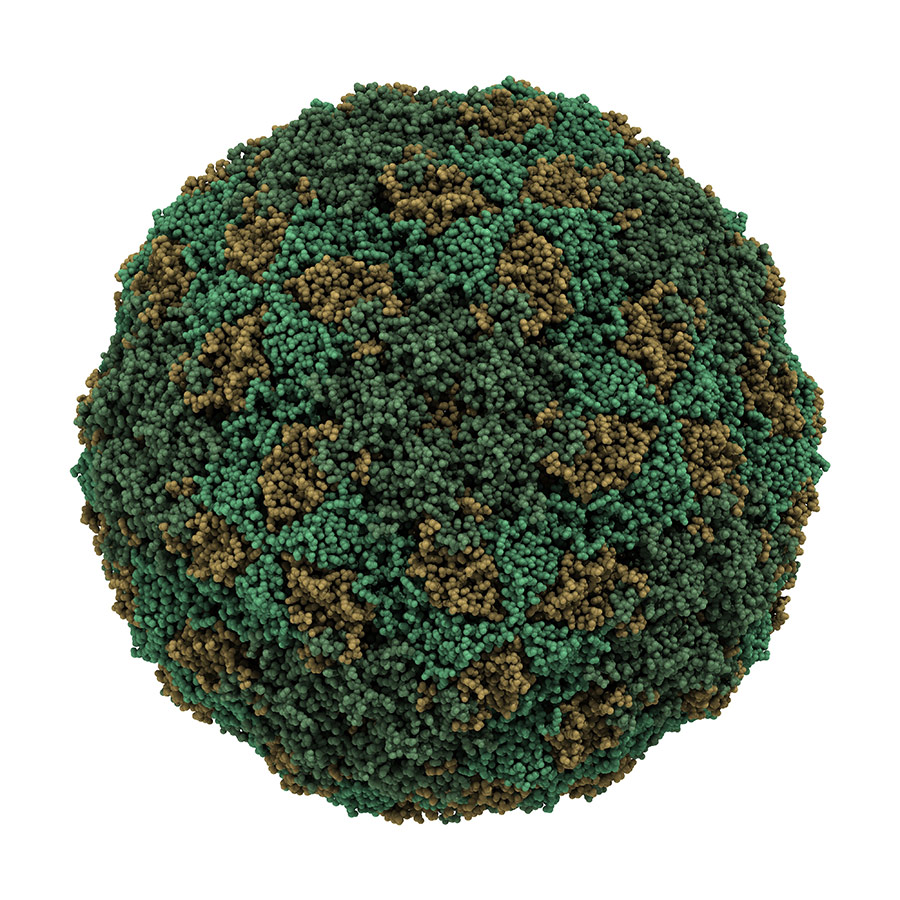
The limits of vaccines
Vaccines have been used as part of the battle against FMD. Inactivated FMDV induces protective immunity against similar strains of the viruses, but it takes at least a week to build. Vaccinated animals do seem to become less sick if they then catch FMD, but often novel strains will still manage to reproduce within the animal hosts in large numbers, and so the infected animals are still contagious.
There are other issues with mass vaccination as a strategy for FMD. It is unfortunately very difficult to determine which animals have antigens (a sign that the animal has been exposed to the virus) because they were vaccinated, and which ones might have antigens because they have had the disease itself. This means that it is then very difficult to verify that any exported meat products are actually disease free, so this reduces the value of meat products and farmers’ access to different markets.
T-1105 strikes at the very machinery that the virus relies upon to make copies of itself.A new chance to tame the virus?
Viruses are notoriously difficult to control. They are relatively simple structures that exploit their host cells’ energy-making and reproductive machinery to make more and more virus and release it back out into the world for them to find more hosts. Their very simplicity is one of the reasons that they can evolve relatively quickly and constantly present a new face to their host’s defences.
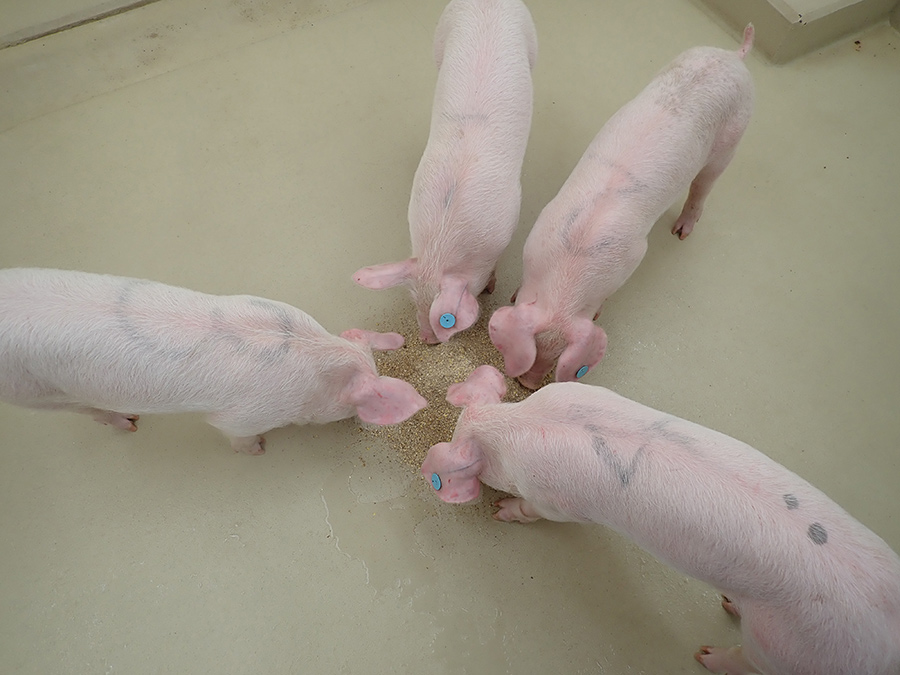
Instead of priming the animal’s immune system by using vaccines, Dr Tatsuya Nishi and Dr Kazuki Morioka from the National Institute of Animal Health at the National Agriculture and Food Research Organization, Japan, are assessing a chemical that is designed to disrupt the functioning of the virus directly. Such compounds are called ‘antivirals’ and, in this case, an organic compound called T-1105 (3-hydroxy-2-pyrazinecarboxamide) was tested.
T-1105 strikes at the very machinery that the virus relies upon to make copies of itself. Since these chemical pathways are so crucial to producing more virus, the researchers’ hypothesis was that this antiviral might be effective, no matter which strain it was acting against.
Nishi and Morioka first tested the ability of T-1105 to prevent FMD viruses from replicating within animal cells cultured in vitro (in a petri dish set-up). The research team wanted to test T-1105’s antiviral abilities against as many foot-and-mouth virus strains as possible. To achieve this, they collected 28 FMDV strains in total. These came from animals that were infected during FMD outbreaks in Japan in 2000 and 2010 and other strains collected in collaboration with researchers from countries as far apart as Mongolia, Thailand, Ghana, Myanmar, Pakistan, and The Pirbright Institute (WOAH/FAO world reference laboratory-FMD, UK). The antiviral compound, T-1105 was added at concentrations that were low enough to be non-toxic to the culture of host-animal cells.
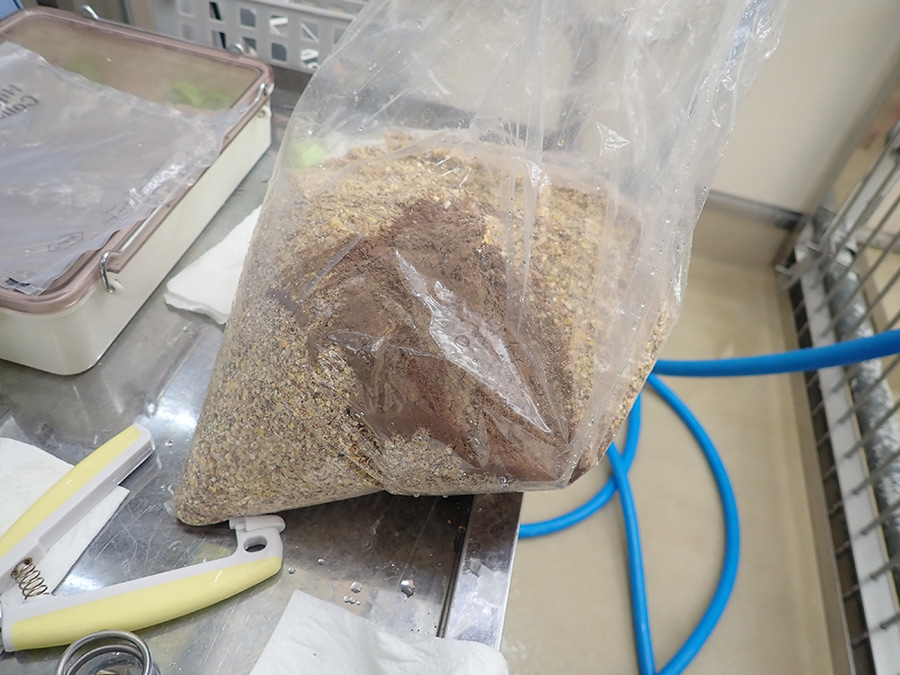
Adding T-1105 to host-animal cells stopped all 28 strains of FMDV from using those host cells to produce more virus. This is great news, implying this treatment might indeed be effective for all strains of the virus.
From virus factories to virus blockers
Obviously, the real test of any antiviral treatment is to see if it works in live animals that have been infected with disease. To achieve this, the research team exposed pigs to one of the FMDV strains and then treated them with T-1105 to see if it stopped the normal progression of foot-and-mouth disease.
None of the pigs that were treated with T-1105 either shortly before or after being infected with FMDV subsequently went on to have any symptoms of foot-and-mouth disease. Even more importantly from a disease-control perspective, no FMD virus particles could be found in samples taken from their snouts, feet, or other likely tissues. Nishi and Morioka’s work shows that we might now have an effective option for stopping FMDV outbreaks in their tracks. This could have a considerable effect on reducing the suffering of animals and might also be a game-changer for the economics of disease prevention and trading relationships between countries that are affected by FMDV.
One medicine-laced mealtime might be sufficient to protect a farm-full of animals.A practical possibility?
Most of us have recent first-hand experience of waiting in a queue to get a COVID-19 or flu vaccine. The benefits are very significant and reasonably long term, but it is also an expensive process requiring an army of willing recipients and trained medical professionals.
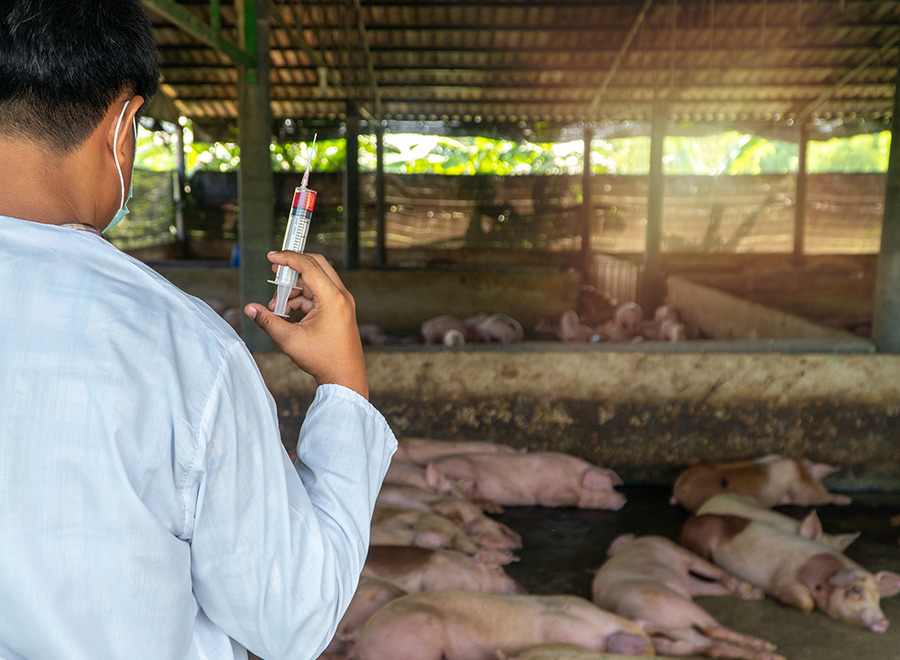
The direct action of T-1105 on FMDV is likely to be much more short-lived than a vaccine, but one of the real bonuses with T-1105 and similar products is that it is stable enough to be given orally and can be added as a powder to the pigs’ feed. No need for needles, no need for queues. Luckily, this powdered form of T-1105 did not put pigs off their food, so one medicine-laced mealtime might be sufficient to protect a farm-full of animals.
The research team proposes that T-1105 might be fed to pigs living in areas where any FMDV outbreak is detected as a focused preventative measure for animals in immediate danger of infection. The treatment was also effective when given a few hours after infection, so it could also be quickly deployed to all other animals within a farm where any FMDV cases have been detected. The researchers see this treatment option as a practical way to potentially dampen down any disease flare-ups before they can escalate.
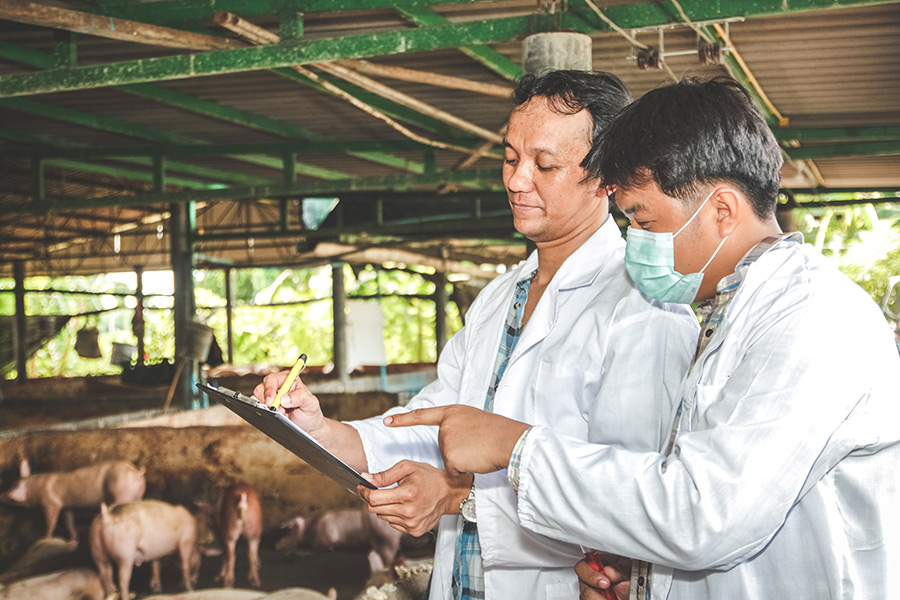
The danger of resistance
One concern in any disease treatment is whether it will continue to be effective in the long term. The research team have worked to assess this concern by exposing in vitro cell cultures with FMDV infections to low doses of T-1105 twenty times in sequence to see if the antiviral treatment becomes less effective with time. Encouragingly, those virus populations that had repeated exposure to sub-lethal doses of T-1105 showed no sign of becoming more resistant to the treatment.
 The results that Nishi and Morioka’s research team are getting are hopefully the first steps towards a future where farmers can begin to tame foot-and-mouth disease, and the devastating outbreaks they used to fear will become a thing of the past.
The results that Nishi and Morioka’s research team are getting are hopefully the first steps towards a future where farmers can begin to tame foot-and-mouth disease, and the devastating outbreaks they used to fear will become a thing of the past.
Personal Response
Do you think T-1105 might also be effective in the fight against FMDV infections in other kinds of livestock?We are currently continuing the research to answer this question. If it can be applied to other kinds of livestock, the potential of this antiviral agent to prevent FMD outbreaks will be further expanded.
How do you see foot-and-mouth disease being managed in the future?
In order to control livestock diseases, it is essential to ensure traceability and comply with routine hygiene management. In the event of an outbreak, we would like to develop a method to prevent the spread of the virus by applying antiviral agents and vaccines without relying on culling.
Do you think we are at the beginning of a huge rise in the identification and use of antiviral drugs?
Yes, we do. For that, the safety of human consumption of antiviral-treated animals also needs to be verified.